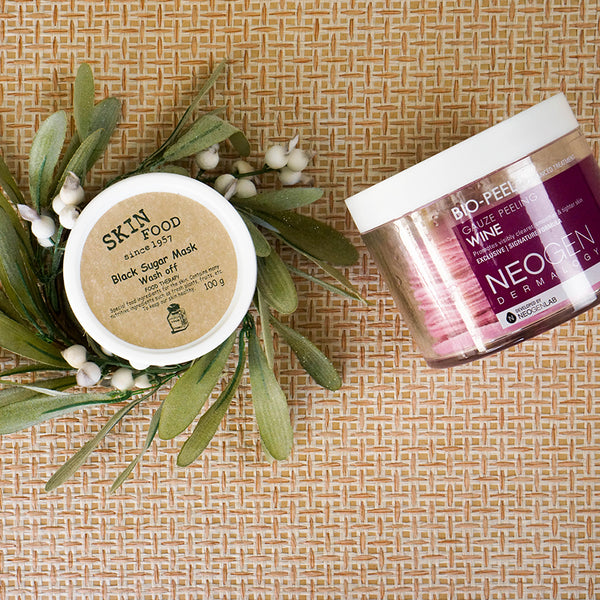Chemical vs Physical Exfoliation: Which is Better?

Few things feel as nice as a good and proper scrub. How many times have you gone to town on your body with a heavenly-smelling scrub or loofah to emerge dolphin-smooth with a flushed glow? You’d probably start firmly believing that cleanliness is to scrubbiness, which isn’t too far from the truth. It’s best to exfoliate once or twice a week to keep your pores nice and clear without overdoing it.
There are some caveats though, meaning you can certainly get too much of a good thing. Exfoliating doesn’t have to be zero-to-60 affair; there are ranges! For one, the main differences generally lie in two camps: chemical and physical exfoliation. If you’re not sure how to choose an exfoliator, read on, and hopefully you’ll have a much better clue on how to scrub-down the safe way!
Physical (AKA Manual) Exfoliators
These are your utilitarian face scrubs—anything with little bits in it to physically scrub your skin clear of debris is a physical exfoliant. The great thing about physical exfoliators is that after a nice face scrub, you really get that instant gratification of a freshly-scrubbed face, all glowing and smooth. The massaging action also stimulates circulation so your cheeks look naturally rosy and your complexion probably looks more “alive.”
But don’t go too hard—you don’t have to apply that much pressure since the scrubby bits (usually sugar or a biodegradable water-soluble beads) do plenty of work just being rubbed on your skin. If you’re too rough with your scrub, it can backfire by making your skin irritated or exposing the raw tissue to bacteria and infection.
Clarisonics and other facial brushes are really popular for polishing your mug, but they're easy to overdo, since the brush can be too harsh A super gentle physical exfoliator (for those who just cannot stand even the mildest acids in chemical exfoliators) would be a konjac sponge. Using one feels like rubbing a nice soft sponge on your face—it’s so gentle you can use it daily with your cleanser to softly scrub your skin clear (these are sponges though so you have to make sure to keep it really clean from bacteria and replace it regularly).
Chemical Exfoliants
Don't be scared by the idea of putting acids on your face! Chemical exfoliators include low-percentages of gentle acids to shimmy those dead skin cells off your face and make way for new cells to turn over, revealing smoother and brighter skin. Chemical exfoliators come in the form of cleansers, toners, serums and sometimes even moisturizers. Be careful mixing targeted topical treatments that may already be harsh, like retinols/retinoids—coupled with an exfoliator, it could lead to flaking, redness and irritation. Chemical exfoliators are a great option for people with sensitive skin, because you can’t really over-scrub. No scrubby bits, no over-scrubbing!
Common chemical exfoliators will have AHAs or BHAs. AHAs (aka Alpha Hydroxy Acids) are best if you have normal/sensitive skin and have skin concerns revolving around sun damage, uneven texture and pigmentation—it helps to keep the uppermost layer of skin free of pore-clogging debris so new cells can elbow their way to the surface. Look for lactic acid and glycolic acids if you think AHAs are for you.
BHAs (Beta Hydroxy Acids) are best for those concerned with blackheads, large pores and milia since it can better penetrate through pore-clogging material. Salicylic acid is probably the most familiar BHA as an active ingredient for treating acne.
Either are available in varying percentages, and you can work your way up. The cool thing about chemical exfoliators is that they do more than just smooth your complexion—they can help stimulate collagen production, reduce wrinkles, firm skin and brighten!
Have you found your dream exfoliator that helps give you your brightest smoothest complexion? Tell us all about it in the comments!
Shop Korean Exfoliants
-
SKINFOOD

BLACK SUGAR WASH OFF MASK
-
SKINFOOD

-
BENTON

ALOE BHA SKIN TONER
 Skip to main
Skip to main

 About Charlotte
About Charlotte